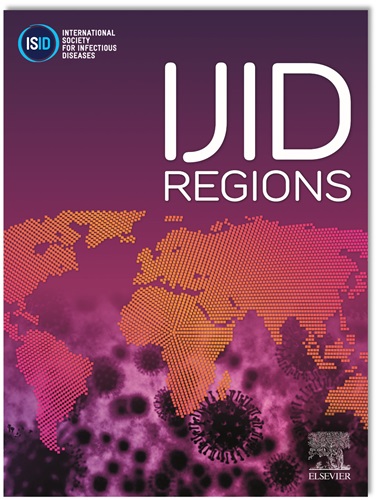Mapping the implementation challenges in a multidisciplinary antimicrobial stewardship intervention across fourteen South African neonatal units: a multi-site survey
IF 4.8
2区 医学
Q1 INFECTIOUS DISEASES
引用次数: 0
Abstract
Background/Introduction
Limited studies report on the implementation of antimicrobial stewardship programmes (ASPs) in resource-limited neonatal inpatient settings. Undertaking qualitative research to better understand the contextual drivers for implementation of ASPs is increasingly recognized as means to enable sustainable stewardship programs.
Methods & Materials
As part of a sequential three-phase, mixed-methods, multidisciplinary, prospective neonatal stewardship interventional study in 14 South African hospitals (7 public, 7 private), we conducted a pre-intervention barriers and enablers survey (BES) to help understand the context for implementing a multidisciplinary approach to neonatal AMS. The survey included 82 potential barriers to neonatal antibiotic stewardship with a five-point rating scale and an open question on enablers. We used a purposive sampling method including neonatal unit multidisciplinary professionals and members of the hospital leadership team at each hospital. Surveys were completed anonymously via an electronic link provided and entered directly into a RedCap database system.
Results
Responses received from 100 health professionals and leaders were equally distributed between public and private sector hospitals. There was a higher proportion of nurse respondents, and a lower proportion of clinicians (neonatologists/paediatricians) respondents from hospitals with smaller neonatal units (<30-beds). Nine of the top 14 barriers for all respondents across all professions were in the domain of personnel, related to time (55/100), workload (53/100), and insufficient staff resources (50/100). A higher proportion of private hospital respondents indicated insufficient doctor involvement (54%) and absence of an antibiotic stewardship multidisciplinary team (MDT) (33%), as important barriers, compared to public hospitals respondents (34% and 33%). Two of the most reported barriers for all respondents were in the domain of data specifically, no/insufficient data on antimicrobial use trends over time (42/100) and antimicrobial/microbiology data available, not accessible to MDT (40/100). The complexity of neonatal care in the domain of knowledge was the third highest barrier for all respondents (51/100), with a higher proportion of pharmacists indicating this as an important barrier (78%), compared to nurses (29%). The main themes from the open question on top enablers for neonatal AMS were more staff resources, better communication, and strengthening MDT collaboration.
Discussion
ASPs globally and in low-and middle-income countries (LMICs) such as South Africa are burdened with many challenges regarding effective implementation of health interventions. Comparative data on barriers and enablers in neonatal AMS in LMICs are limited. The results of our survey provided insight into the MDT perspectives on the barriers and enablers for neonatal AMS and helped identify the main contextual factors that needed to be addressed in the implementation phase of the study.
Conclusion
Implementing ASP interventions using MDTs requires contextual understanding of the drivers for clinical practice, and investment in addressing the drivers that may negatively impact progress, whilst learning from success factors across MDTs.
求助全文
约1分钟内获得全文
求助全文
来源期刊
CiteScore
18.90
自引率
2.40%
发文量
1020
审稿时长
30 days
期刊介绍:
International Journal of Infectious Diseases (IJID)
Publisher: International Society for Infectious Diseases
Publication Frequency: Monthly
Type: Peer-reviewed, Open Access
Scope:
Publishes original clinical and laboratory-based research.
Reports clinical trials, reviews, and some case reports.
Focuses on epidemiology, clinical diagnosis, treatment, and control of infectious diseases.
Emphasizes diseases common in under-resourced countries.

 求助内容:
求助内容: 应助结果提醒方式:
应助结果提醒方式:


